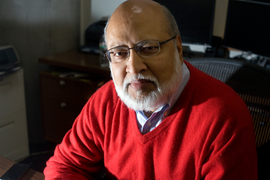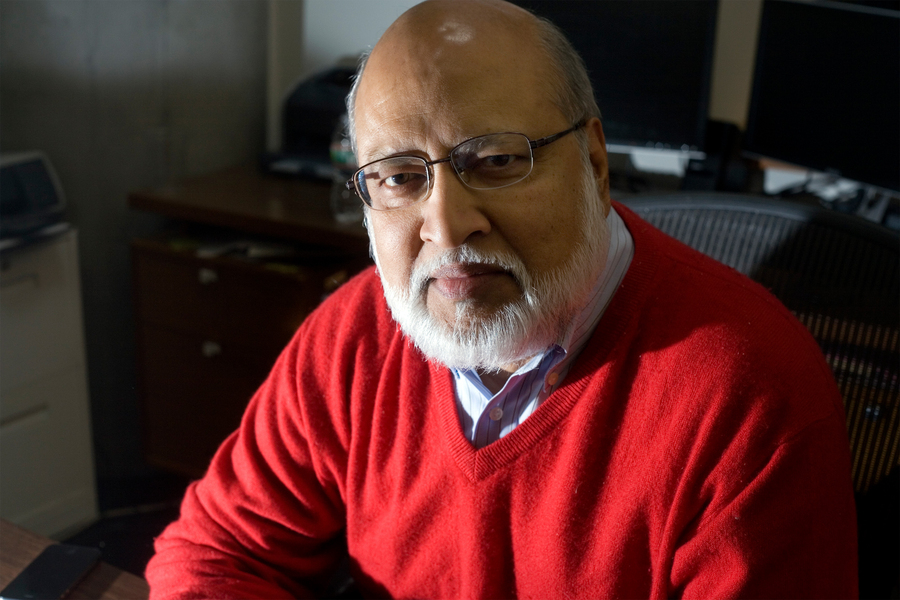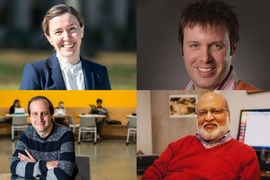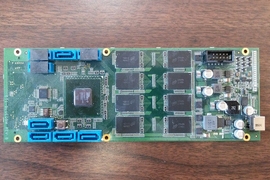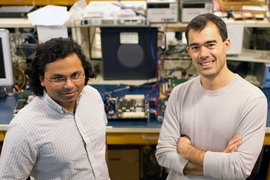Arvind Mithal, the Charles W. and Jennifer C. Johnson Professor in Computer Science and Engineering at MIT, head of the faculty of computer science in the Department of Electrical Engineering and Computer Science (EECS), and a pillar of the MIT community, died on June 17. Arvind, who went by the mononym, was 77 years old.
A prolific researcher who led the Computation Structures Group in the Computer Science and Artificial Intelligence Laboratory (CSAIL), Arvind served on the MIT faculty for nearly five decades.
“He was beloved by countless people across the MIT community and around the world who were inspired by his intellectual brilliance and zest for life,” President Sally Kornbluth wrote in a letter to the MIT community today.
As a scientist, Arvind was well known for important contributions to dataflow computing, which seeks to optimize the flow of data to take advantage of parallelism, achieving faster and more efficient computation.
In the last 25 years, his research interests broadened to include developing techniques and tools for formal modeling, high-level synthesis, and formal verification of complex digital devices like microprocessors and hardware accelerators, as well as memory models and cache coherence protocols for parallel computing architectures and programming languages.
Those who knew Arvind describe him as a rare individual whose interests and expertise ranged from high-level, theoretical formal systems all the way down through languages and compilers to the gates and structures of silicon hardware.
The applications of Arvind’s work are far-reaching, from reducing the amount of energy and space required by data centers to streamlining the design of more efficient multicore computer chips.
“Arvind was both a tremendous scholar in the fields of computer architecture and programming languages and a dedicated teacher, who brought systems-level thinking to our students. He was also an exceptional academic leader, often leading changes in curriculum and contributing to the Engineering Council in meaningful and impactful ways. I will greatly miss his sage advice and wisdom,” says Anantha Chandrakasan, chief innovation and strategy officer, dean of engineering, and the Vannevar Bush Professor of Electrical Engineering and Computer Science.
“Arvind’s positive energy, together with his hearty laugh, brightened so many people’s lives. He was an enduring source of wise counsel for colleagues and for generations of students. With his deep commitment to academic excellence, he not only transformed research in computer architecture and parallel computing but also brought that commitment to his role as head of the computer science faculty in the EECS department. He left a lasting impact on all of us who had the privilege of working with him,” says Dan Huttenlocher, dean of the MIT Schwarzman College of Computing and the Henry Ellis Warren Professor of Electrical Engineering and Computer Science.
Arvind developed an interest in parallel computing while he was a student at the Indian Institute of Technology in Kanpur, from which he received his bachelor’s degree in 1969. He earned a master’s degree and PhD in computer science in 1972 and 1973, respectively, from the University of Minnesota, where he studied operating systems and mathematical models of program behavior. He taught at the University of California at Irvine from 1974 to 1978 before joining the faculty at MIT.
At MIT, Arvind’s group studied parallel computing and declarative programming languages, and he led the development of two parallel computing languages, Id and pH. He continued his work on these programming languages through the 1990s, publishing the book “Implicit Parallel Programming in pH” with co-author R.S. Nikhil in 2001, the culmination of more than 20 years of research.
In addition to his research, Arvind was an important academic leader in EECS. He served as head of computer science faculty in the department and played a critical role in helping with the reorganization of EECS after the establishment of the MIT Schwarzman College of Computing.
“Arvind was a force of nature, larger than life in every sense. His relentless positivity, unwavering optimism, boundless generosity, and exceptional strength as a researcher was truly inspiring and left a profound mark on all who had the privilege of knowing him. I feel enormous gratitude for the light he brought into our lives and his fundamental impact on our community,” says Daniela Rus, the Andrew and Erna Viterbi Professor of Electrical Engineering and Computer Science and the director of CSAIL.
His work on dataflow and parallel computing led to the Monsoon project in the late 1980s and early 1990s. Arvind’s group, in collaboration with Motorola, built 16 dataflow computing machines and developed their associated software. One Monsoon dataflow machine is now in the Computer History Museum in Mountain View, California.
Arvind’s focus shifted in the 1990s when, as he explained in a 2012 interview for the Institute of Electrical and Electronics Engineers (IEEE), funding for research into parallel computing began to dry up.
“Microprocessors were getting so much faster that people thought they didn’t need it,” he recalled.
Instead, he began applying techniques his team had learned and developed for parallel programming to the principled design of digital hardware.
In addition to mentoring students and junior colleagues at MIT, Arvind also advised universities and governments in many countries on research in parallel programming and semiconductor design.
Based on his work on digital hardware design, Arvind founded Sandburst in 2000, a fabless manufacturing company for semiconductor chips. He served as the company’s president for two years before returning to the MIT faculty, while continuing as an advisor. Sandburst was later acquired by Broadcom.
Arvind and his students also developed Bluespec, a programming language designed to automate the design of chips. Building off this work, he co-founded the startup Bluespec, Inc., in 2003, to develop practical tools that help engineers streamline device design.
Over the past decade, he was dedicated to advancing undergraduate education at MIT by bringing modern design tools to courses 6.004 (Computation Structures) and 6.191 (Introduction to Deep Learning), and incorporating Minispec, a programming language that is closely related to Bluespec.
Arvind was honored for these and other contributions to data flow and multithread computing, and the development of tools for the high-level synthesis of hardware, with membership in the National Academy of Engineering in 2008 and the American Academy of Arts and Sciences in 2012. He was also named a distinguished alumnus of IIT Kanpur, his undergraduate alma mater.
“Arvind was more than a pillar of the EECS community and a titan of computer science; he was a beloved colleague and a treasured friend. Those of us with the remarkable good fortune to work and collaborate with Arvind are devastated by his sudden loss. His kindness and joviality were unwavering; his mentorship was thoughtful and well-considered; his guidance was priceless. We will miss Arvind deeply,” says Asu Ozdaglar, deputy dean of the MIT Schwarzman College of Computing and head of EECS.
Among numerous other awards, including membership in the Indian National Academy of Sciences and fellowship in the Association for Computing Machinery and IEEE, he received the Harry H. Goode Memorial Award from IEEE in 2012, which honors significant contributions to theory or practice in the information processing field.
A humble scientist, Arvind was the first to point out that these achievements were only possible because of his outstanding and brilliant collaborators. Chief among those collaborators were the undergraduate and graduate students he felt fortunate to work with at MIT. He maintained excellent relationships with them both professionally and personally, and valued these relationships more than the work they did together, according to family members.
In summing up the key to his scientific success, Arvind put it this way in the 2012 IEEE interview: “Really, one has to do what one believes in. I think the level at which most of us work, it is not sustainable if you don’t enjoy it on a day-to-day basis. You can’t work on it just because of the results. You have to work on it because you say, ‘I have to know the answer to this,’” he said.
He is survived by his wife, Gita Singh Mithal, their two sons Divakar ’01 and Prabhakar ’04, their wives Leena and Nisha, and two grandchildren, Maya and Vikram.
